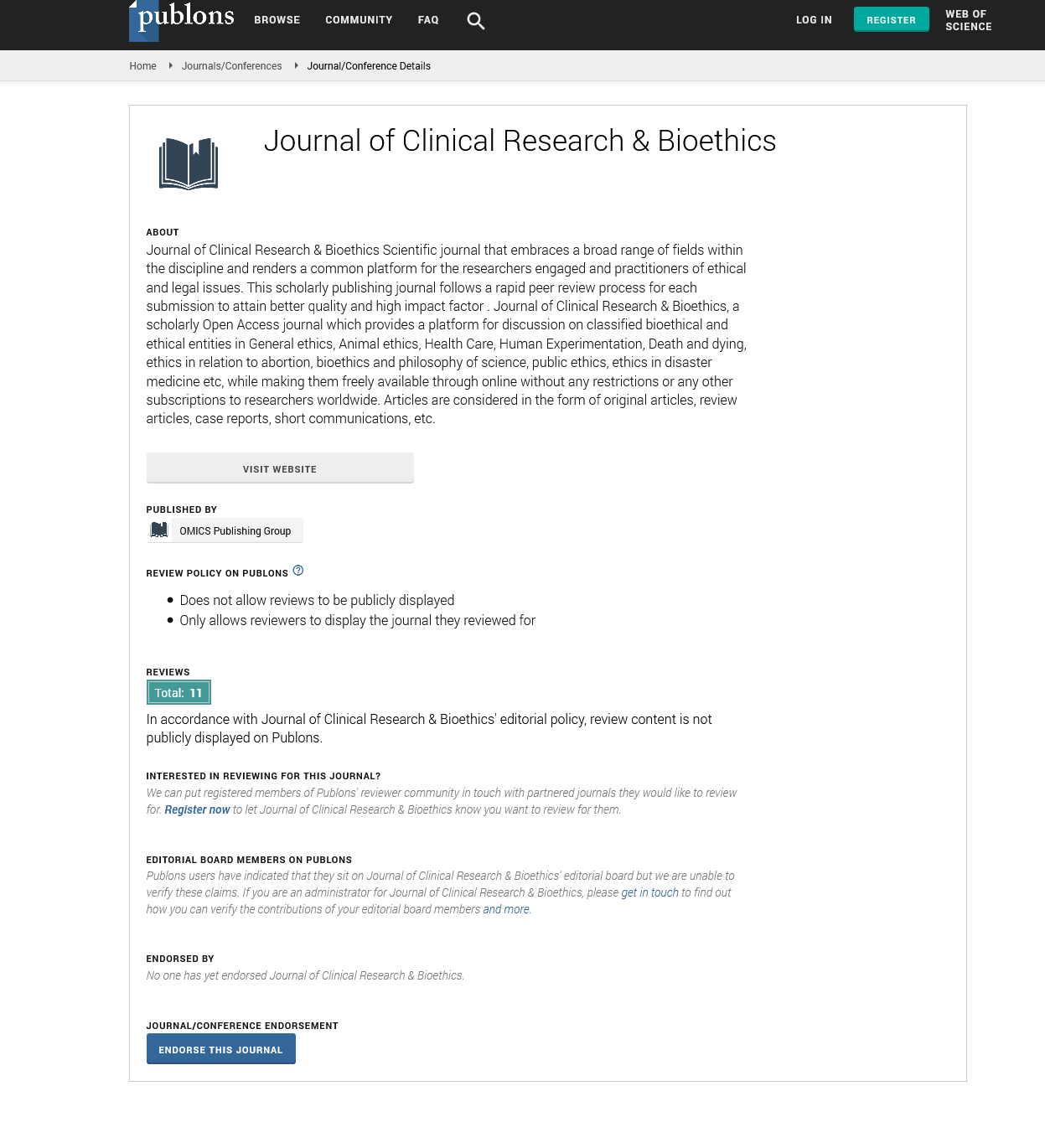Indexed In
- Open J Gate
- Genamics JournalSeek
- JournalTOCs
- RefSeek
- Hamdard University
- EBSCO A-Z
- OCLC- WorldCat
- Publons
- Geneva Foundation for Medical Education and Research
- Google Scholar
Useful Links
Share This Page
Journal Flyer

Open Access Journals
- Agri and Aquaculture
- Biochemistry
- Bioinformatics & Systems Biology
- Business & Management
- Chemistry
- Clinical Sciences
- Engineering
- Food & Nutrition
- General Science
- Genetics & Molecular Biology
- Immunology & Microbiology
- Medical Sciences
- Neuroscience & Psychology
- Nursing & Health Care
- Pharmaceutical Sciences
Perspective - (2024) Volume 0, Issue 0
Hyperprolactinemia: Advances in Diagnosis and Therapeutic Interventions
Laura Jane*Received: 24-Sep-2024, Manuscript No. JCRB-24-27707; Editor assigned: 26-Sep-2024, Pre QC No. JCRB-24-27707 (PQ); Reviewed: 10-Oct-2024, QC No. JCRB-24-27707; Revised: 16-Oct-2024, Manuscript No. JCRB-24-27707 (R); Published: 24-Oct-2024, DOI: 10.35248/2155-9627.24.S22.005
Description
Hyperprolactinemia is a condition characterized by elevated levels of prolactin, a hormone produced by the pituitary gland that plays an essential role in lactation and reproductive health. While mild elevations in prolactin may not result in significant symptoms, moderate to severe increases can lead to reproductive dysfunction, menstrual disturbances, infertility and galactorrhea (abnormal milk production). It is also associated with various clinical conditions such as pituitary tumors (prolactinomas), hypothyroidism and the use of certain medications. Over the years, advances in the diagnosis and management of hyperprolactinemia have improved outcomes, allowing for better patient care and treatment strategies.
Accurate and timely diagnosis is essential for managing hyperprolactinemia, as it helps differentiate between physiological causes, such as pregnancy or breastfeeding and pathological causes, such as pituitary adenomas. The diagnostic approach has evolved significantly with advancements in laboratory testing, imaging techniques and genetic studies. The initial diagnostic test for hyperprolactinemia is a blood test to measure prolactin levels. Over the years, the sensitivity and specificity of prolactin assays have improved, allowing for more accurate detection of even subtle increases in prolactin levels. Advanced immunoassays such as chemiluminescent and radioimmunoassays provide high accuracy, reducing false positives and negatives that were more common with older testing methods. One of the challenges in diagnosing hyperprolactinemia has been the variability in prolactin levels due to factors such as stress, meals and exercise. However, research has led to better standardized testing protocols, with recommendations for multiple measurements taken over different times of the day to ensure accuracy. Additionally, if prolactin levels are only mildly elevated, a repeat test may be recommended to confirm the diagnosis.
If hyperprolactinemia is suspected to be caused by a prolactinoma or other pituitary pathology, imaging studies are essential. The use of high-resolution MRI has significantly improved the detection of pituitary tumors, especially microprolactinomas, which can be difficult to detect with earlier imaging technologies. Advances in imaging technology, such as dynamic contrast-enhanced MRI, have enhanced visualization of small tumors, allowing for more accurate diagnosis and monitoring of tumor progression or shrinkage. Although not commonly used in routine clinical practice, genetic testing is having more importance in cases of familial prolactinomas and rare genetic syndromes that predispose individuals to pituitary adenomas. The discovery of certain genetic mutations may help identify at-risk populations and offer targeted interventions earlier in the disease process. Additionally, ongoing research into biomarkers for prolactin regulation promises to provide more insights into the underlying mechanisms of hyperprolactinemia and facilitate earlier and more precise diagnosis.
The treatment of hyperprolactinemia depends on the underlying cause, severity of symptoms and the presence of comorbidities such as osteoporosis or infertility. Recent advancements in therapeutic strategies have made treatment more effective and tailored to individual patient needs. In cases related to prolactinomas, the treatment is done by using dopamine agonists. These medications mimic the action of dopamine, which normally inhibits prolactin secretion from the pituitary gland. Recent studies have shown that cabergoline is highly effective even in large tumors, with remission rates as high as 70%-80%. In rare cases where dopamine agonists are ineffective or poorly tolerated or in the presence of large tumors causing compression of surrounding structures, surgery may be necessary. Endoscopic transsphenoidal surgery has become the gold standard for removing prolactinomas, as it provides a minimally invasive approach with fewer complications and faster recovery times compared to traditional open surgery. Recent innovations in surgical techniques and improved patient selection criteria have made surgery a safe and effective option for those with resistant tumors or adverse reactions to medication.
Citation: Jane L (2024). Hyperprolactinemia: Advances in Diagnosis and Therapeutic Interventions. J Clin Res Bioeth. S22:005.
Copyright: © 2024 Jane L. This is an open-access article distributed under the terms of the Creative Commons Attribution License, which permits unrestricted use, distribution, and reproduction in any medium, provided the original author and source are credited.

